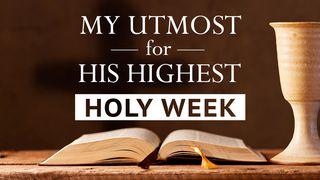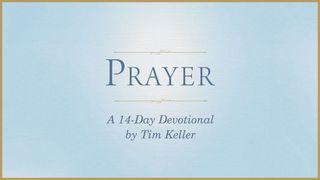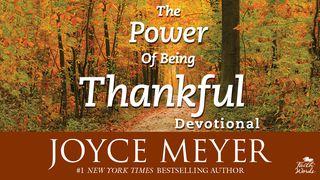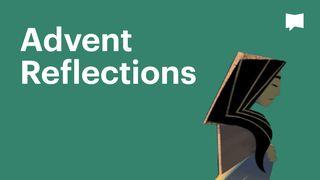Lent For EveryoneSample

WEEK 4: WEDNESDAY
We reach Palm Sunday in Matthew's story ten days before we get there in our own Lenten journey. It's just as well. There is so much packed between Palm Sunday and Good Friday that it's important to get advance notice of what's in store.
It is one of the great scenes in all scripture. Jesus riding into Jerusalem on a donkey: it could be the climax of an opera, or a Shakespeare play. For Matthew, though, it's the climax of a much longer and more complicated story: the whole story of God and Israel. And it turns out that the play, at the moment, anyway, is more of a tragedy than a comedy.
St John put it like this: he came to his own, and his own didn't receive him. All along Jesus had made it clear that his particular vocation was to present the arrival of heaven's kingdom to the people of Israel. Having prepared the way by his work up in the north, he has now arrived, with a great throng of Passover pilgrims, at the holy city itself.
Only it wasn't as holy as it should have been. Jerusalem, the city chosen by God as his own resting-place, had also been chosen by many as their place of profit. The first time I went into the Old City of Jerusalem, the first sign I saw was a money-changer's shop. I suspect it's always been like that, with people from all over the world needing now to use the local currency. In the case of the Temple, of course, pilgrims needed to buy animals for sacrifice.
Much safer that way than bring- ing a lamb or a goat from far off, to risk it being savaged by predators on the way. Come with cash, change it locally, buy a pure animal on site ready for sacrifice. Simple. And the local traders did well out of it.
But Jesus' protest against the Temple wasn't just about it being, in that sense, 'a den of robbers'. He was quoting the prophet Jeremiah at that point, and Jeremiah wasn't just worried about economic exploitation. Something deeper and darker was afoot. Behind all the outward trappings of the Temple, Jesus could see that the whole place, and the whole city, had come to symbolize the determination of Israel to do things their own way; in particular, to embrace a vision of God and God's kingdom which was fundamentally different from the vision which he was announcing and living out. Their vision would have climaxed in a Messiah coming on a war-horse. Jesus' vision led him to act out the prophecy of Zechariah: your king is coming to you, humble, and mounted on a donkey. This simple yet profound symbolic action continues to resonate out into the world where, even among people who profess to follow Jesus, the war-horse is still preferred to the donkey.
The third level concerns what Matthew is saying about Jesus himself. The local crowds, seeing all the commotion as Jesus came into the city, were told by the pilgrims that 'this is the prophet Jesus, from Nazareth in Galilee' (verse 11). But Matthew makes it clear that, though Jesus is indeed a prophet, he is much more. To begin with, he is the 'Son of David' — the royal title which so annoyed the chief priests and scribes (verse 15). They were perhaps frightened of what the Roman authorities might do to the city if it welcomed a would-be king. They may also have been frightened of what a would-be king and his followers might say about them.
Things don't stop there. The Temple was, after all, the place where the one true God was supposed to live on earth with his people. For Matthew (1.23; 28.20), Jesus himself has become that place. In this scene, we discover the great truth that the early Christians embraced and developed: that the old Temple on Mount Zion was simply a signpost, pointing forwards to the new reality of God's presence with his people.
Jerusalem, then, wasn't big enough for Jesus and the Temple together. They were bound to clash. That clash begins the sequence of events which will lead, soon enough, to Jesus' death. But, as we watch, we also see the signs of what that death might mean. If Jesus is the true Temple, we might expect that it is in him, rather than in the Temple, that healing and forgiveness are to be found. Matthew draws our attention to the odd fact that 'the blind and the lame came to him in the Temple, and he cured them'. In 2 Samuel 5.8, the blind and the lame had been excluded from the Temple, following the orders of David himself. Now the Son of David likewise keeps the Temple free from the blind and the lame — by healing them.
It would be hard to sum up any better the difference between what Jesus was offering and what his contemporaries were wanting.
TODAY
Gracious Lord, challenge us when we distort your will and your promise, and come to dwell with us and in us now and for ever.
We reach Palm Sunday in Matthew's story ten days before we get there in our own Lenten journey. It's just as well. There is so much packed between Palm Sunday and Good Friday that it's important to get advance notice of what's in store.
It is one of the great scenes in all scripture. Jesus riding into Jerusalem on a donkey: it could be the climax of an opera, or a Shakespeare play. For Matthew, though, it's the climax of a much longer and more complicated story: the whole story of God and Israel. And it turns out that the play, at the moment, anyway, is more of a tragedy than a comedy.
St John put it like this: he came to his own, and his own didn't receive him. All along Jesus had made it clear that his particular vocation was to present the arrival of heaven's kingdom to the people of Israel. Having prepared the way by his work up in the north, he has now arrived, with a great throng of Passover pilgrims, at the holy city itself.
Only it wasn't as holy as it should have been. Jerusalem, the city chosen by God as his own resting-place, had also been chosen by many as their place of profit. The first time I went into the Old City of Jerusalem, the first sign I saw was a money-changer's shop. I suspect it's always been like that, with people from all over the world needing now to use the local currency. In the case of the Temple, of course, pilgrims needed to buy animals for sacrifice.
Much safer that way than bring- ing a lamb or a goat from far off, to risk it being savaged by predators on the way. Come with cash, change it locally, buy a pure animal on site ready for sacrifice. Simple. And the local traders did well out of it.
But Jesus' protest against the Temple wasn't just about it being, in that sense, 'a den of robbers'. He was quoting the prophet Jeremiah at that point, and Jeremiah wasn't just worried about economic exploitation. Something deeper and darker was afoot. Behind all the outward trappings of the Temple, Jesus could see that the whole place, and the whole city, had come to symbolize the determination of Israel to do things their own way; in particular, to embrace a vision of God and God's kingdom which was fundamentally different from the vision which he was announcing and living out. Their vision would have climaxed in a Messiah coming on a war-horse. Jesus' vision led him to act out the prophecy of Zechariah: your king is coming to you, humble, and mounted on a donkey. This simple yet profound symbolic action continues to resonate out into the world where, even among people who profess to follow Jesus, the war-horse is still preferred to the donkey.
The third level concerns what Matthew is saying about Jesus himself. The local crowds, seeing all the commotion as Jesus came into the city, were told by the pilgrims that 'this is the prophet Jesus, from Nazareth in Galilee' (verse 11). But Matthew makes it clear that, though Jesus is indeed a prophet, he is much more. To begin with, he is the 'Son of David' — the royal title which so annoyed the chief priests and scribes (verse 15). They were perhaps frightened of what the Roman authorities might do to the city if it welcomed a would-be king. They may also have been frightened of what a would-be king and his followers might say about them.
Things don't stop there. The Temple was, after all, the place where the one true God was supposed to live on earth with his people. For Matthew (1.23; 28.20), Jesus himself has become that place. In this scene, we discover the great truth that the early Christians embraced and developed: that the old Temple on Mount Zion was simply a signpost, pointing forwards to the new reality of God's presence with his people.
Jerusalem, then, wasn't big enough for Jesus and the Temple together. They were bound to clash. That clash begins the sequence of events which will lead, soon enough, to Jesus' death. But, as we watch, we also see the signs of what that death might mean. If Jesus is the true Temple, we might expect that it is in him, rather than in the Temple, that healing and forgiveness are to be found. Matthew draws our attention to the odd fact that 'the blind and the lame came to him in the Temple, and he cured them'. In 2 Samuel 5.8, the blind and the lame had been excluded from the Temple, following the orders of David himself. Now the Son of David likewise keeps the Temple free from the blind and the lame — by healing them.
It would be hard to sum up any better the difference between what Jesus was offering and what his contemporaries were wanting.
TODAY
Gracious Lord, challenge us when we distort your will and your promise, and come to dwell with us and in us now and for ever.
Scripture
About this Plan

Lent for Everyone is a devotional created and written by N.T. (Tom) Wright. For each day of Lent, there is a reading chosen from the Gospel of Matthew, plus a reflection by Wright. These readings have grown out of a project encouraging Lent reading in Northern England. This is the second in a three-volume series based on the Revised Common Lectionary of the Church of England.
More
We would like to thank SPCK Publishing for providing Lent for Everyone by Tom Wright. For more information, please visit their site: http://www.spckpublishing.co.uk/shop/lent-for-everyone-matthew/
Related Plans

Journeying With Jesus - 40 Days Lent Devotional

My Utmost for His Highest - Holy Week

Prayer: A 14-Day Devotional by Tim Keller

The Power Of Being Thankful

My Utmost For His Highest

The Greatest Gift

Joyce Meyer: Promises for Your Everyday Life - a Daily Devotional

BibleProject | Advent Reflections

Advent: The Journey to Christmas
